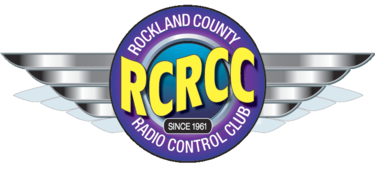|

|
1. OPERATIONS - REQUIREMENTS -
LIMITATIONS:
a) FPV novice pilots must
use a buddy-box system with an FPV spotter while learning to fly FPV.
b) All FPV flights
require an FPV pilot to have a spotter next to him/her while maintaining
Visual Line of Sight (VLOS) with the FPV aircraft throughout its flight.
c) The FPV pilot must
brief the spotter on the spotter's duties, communications and hand-over
control procedures before the FPV flight.
d) The spotter must
communicate with the FPV pilot to ensure the FPV aircraft remains within
VLOS and within the fields perimeter, warning the FPV pilot of approaching
aircraft, and when avoidance techniques are necessary.
e) The spotter may at any
time during an FPV flight acquire the transmitter from the FPV pilot and
assume VLOS control of the model aircraft.
f) If the FPV pilot
experiences a problem due to a loss of video link, orientation, or is unable
to safely fly, he/she must abandon FPV mode and fly VLOS or pass the
RC transmitter to the FPV spotter to assume VLOS control of the model
aircraft.
g) Before the initial
flight of an FPV model aircraft and/or after any changes or repairs to
essential flight systems, the FPV model aircraft must have an R/C test
flight by conventional VLOS.
h) FPV model aircraft
must use frequencies approved by the FCC for both the RC system and the
wireless video system. Pilots must meet applicable FCC licensing
requirements if they choose to operate the RC flight control system or the
wireless video system on Amateur Band frequencies.
2. RANGE - ALTITUDE - WEIGHT - SPEED:
a) One of the
requirements in Federal Law (Public Law 112-95 Sec 336 (c) (2)
February 14, 2012) for model aircraft to be excluded from FAA regulations is
that model aircraft must be flown within VLOS of the operator. When
operating at any of the RCRCC fields the aircraft must stay within the
boundaries of the field at all times.
b) Model aircraft flown
using FPV must remain at or below 400 feet Above Ground Level (AGL) when
within 3 miles of an airport as specified in the AMA Safety Code.
c) Model aircraft flown
FPV are limited to a weight (including fuel, batteries, and onboard FPV
equipment) of 15lbs. and a speed of 70mph.
3. RECOMMENDATIONS & INFORMATION:
a) FPV novice pilots
should consider using a cockpit view flight simulator to become accustomed
to FPV flight.
b) FPV pilots should
consider using a programmable autopilot (AMA Document #560) with a failsafe
"return to launch" (RTL) feature that will maintain control of the aircraft
in the event of signal loss.
c) An onboard camera
equipped with a pan and tilt mount that is positioned by head tracking
goggles, will improve the FPV pilot's situational awareness of airspace
surrounding the FPV aircraft during flight, but does not replace the
requirement for a spotter.
d) When purchasing FPV
operational systems, always try to select quality equipment, verify its
compatibility, install components for interference rejection, and determine
that signal range is adequate for maximum VLOS range. |
|

